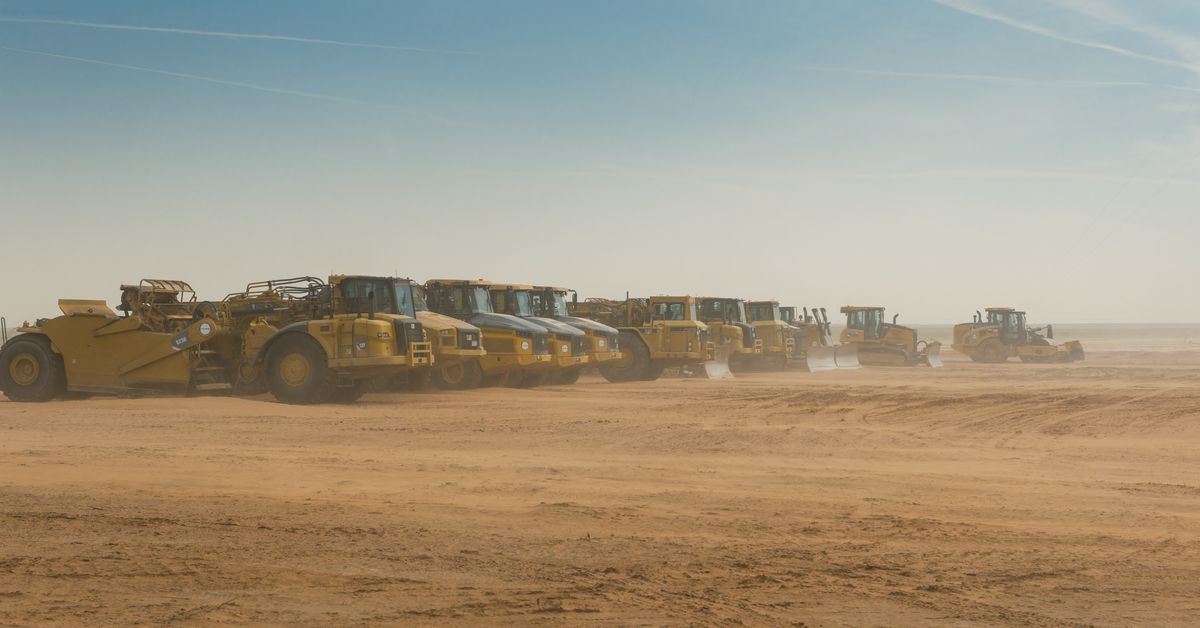A major project to capture and store carbon dioxide pollution for companies including Microsoft and Amazon just took a significant step forward — the Environmental Protection Agency (EPA) issued draft permits for wells that would store the CO2 underground. The EPA issued the permits to Oxy Low Carbon Ventures, a subsidiary of Occidental Petroleum that has landed big carbon removal deals with major tech companies.
Oxy is building a massive industrial plant called Stratos to filter CO2 out of the air in Ector County, Texas, where the three proposed wells are located. This is the first time the EPA has issued draft permits in Texas for the Class VI wells used specifically to sequester carbon dioxide.
These wells could be a key piece of companies’ efforts to hit sustainability goals
If the project makes it to the finish line, these wells could be a key piece of companies’ efforts to hit sustainability goals, even as their greenhouse gas emissions continue to grow. They’re relying on new technologies that are supposed to suck huge amounts of planet-heating CO2 out of the atmosphere. But all of that carbon dioxide has to be permanently stored away for these technologies to help keep climate change from getting worse.
Stratos is expected to be one of the world’s first large carbon removal facilities, also called a direct air capture (DAC) plant. It’s scheduled to start running during the middle of next year and is supposed to have the capacity to capture up to 500,000 metric tons of carbon dioxide per year for clients looking to cancel out some of their carbon footprint. For comparison, that’s still only a small fraction of the 15.357 million metric tons of carbon dioxide emissions Microsoft reported in its last fiscal year. Oxy issues carbon credits to represent the tons of CO2 drawn down and sequestered.
Oxy has agreed to sell 500,000 metric tons of carbon dioxide removal credits to Microsoft over six years, amounting to the largest such agreement of its kind yet, according to the announcement made in July. Microsoft has a goal of reaching negative emissions by 2030, meaning it would take more pollution out of the atmosphere than it adds by burning fossil fuels. The company’s greenhouse gas emissions, however, have actually grown roughly 30 percent since it set that goal in 2020. Microsoft’s race to deploy new generative AI tools is an energy-intensive endeavor, and its data centers will keep generating greenhouse gas emissions as long as the power grids they plug into still run on fossil fuels.
Credits from both deals are expected to come from Stratos, the first of Oxy’s DAC plants under construction. The three wells near Stratos could store up to 722,000 metric tons of carbon dioxide per year, some 4,400 feet under former ranch land. To ensure that shooting the CO2 underground doesn’t inadvertently contaminate drinking water sources, the EPA has to issue permits for the new wells under the Safe Drinking Water Act Underground Injection Control program.
The draft permits will be open for public comment until October 7th, and the EPA has a public hearing scheduled for October 3rd. The agency will take all the comments it gathers into consideration before making a final decision on whether to grant the permits. It says its initial review of the permit applications “indicates no endangerment” to underground sources of drinking water.

